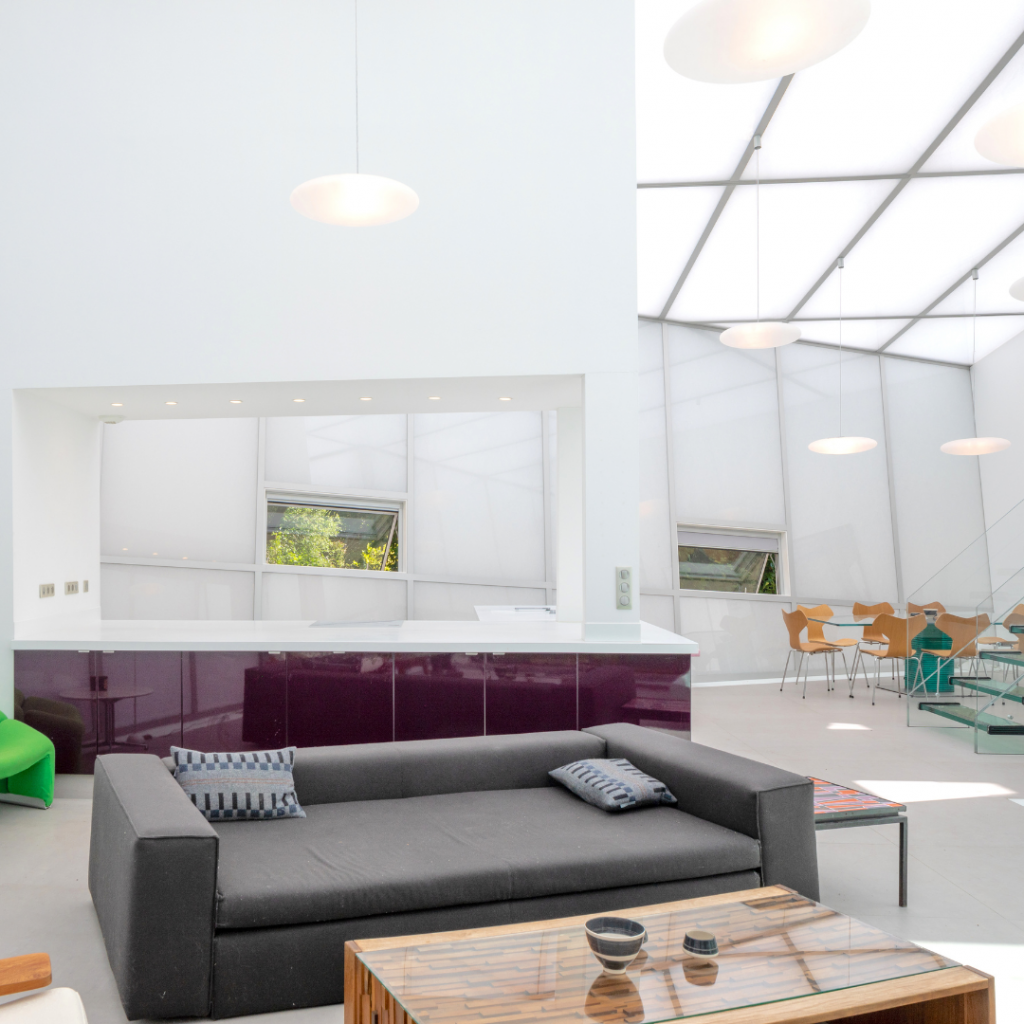
The multi-awarded French architect and urban planner has designed a luminous cocoon in Carantec, Brittany, for a client suffering from progressive and irreversible loss of sight.

For Odile Decq, “housing should follow people’s lives, not the other way around. This opalescent parallelepiped glass house is a good example. Natural light is at the heart of the process. The patio acts as a transition between exterior and interior, opening to the double-height living space, which includes a living room, open kitchen, and dining room. Two bedrooms are arranged on the first floor and a third, with its en-suite bathroom, is located upstairs, accessed by a glass staircase. To create a radiant, comfortable, and homogeneous atmosphere, translucent walls between the facades and the roof were used. These are constructed of two insulating “double glazing” panels that diffuse light.

These panels avoid shadows, while providing solar protection. Odile Decq also studied the artificial lighting, taking up the homogeneity of natural light, fixed at the level of the roof structure, while peripheral spotlights, installed along the façade, emit a soft and diffuse light at nightfall. The landscaping completes the beauty of this glass house, in harmony with the local plant species. The multi-awarded French architect and urban planner has designed a luminous cocoon in Carantec, Brittany, for a client suffering from progressive and irreversible loss of sight.

Nathalie Dassa
